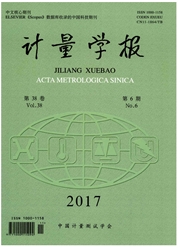

 中文摘要:
中文摘要:
针对某1220冷轧机带钢表面振纹形成的原因进行了跟踪测试和深入研究。在对1220冷轧机振动测试的基础上,通过对机架动态特性分析及工作辊周期内各阶段振动信号的分析研究,发现在支撑辊使用中后期,轧机以600Hz左右的第7阶固有振动为主;在轧制速度为中高速稳定轧制阶段,工作辊对中间辊的相对运动形成工作辊表面振纹;该辊面振纹反作用于轧机,引起轧机强迫振动,进一步加速振纹的形成,轧机的振动为共振与强迫振动共存。在分析振纹产生机理的基础上,结合振纹间距与振源的关系,找到了引起1220轧机产生振纹的原因,提出了振纹抑制措施,并取得了很好的抑制效果。
 英文摘要:
英文摘要:
Aiming at a 1220 strip surface, where the cold rolling mill had chatter marks, on which the reasons for the formation was tracked tested for in-depth study. Based on the vibration test, the analysis was given to the dynamic characteristics of the rack and the various phases of work rolls in the cycle on vibration signal. It was found that in its middle or late phase of the backup roll being used, the mill mainly worked with the 7th-order natural vibration at app. 600 Hz. When the rolling speed was maintained in the stable middle-/high-speed rolling phase, the relative movement of the work roll to the intermediate roll caused the formation of the chatter marks in the work roll surface. This had reaction to the mill that caused the forced vibration mill to further accelerate the formation of chatter marks, where mill vibration came along with both the resonance and forced vibration. In the analysis of the mechanism on the chatter marks, the relationship between chatter marks spacing and vibration source was considered in successfully finding out the cause of the 1220 mill chatter marks generated, and then the chatter marks suppression measures were proposed with satisfied effects.
 同期刊论文项目
同期刊论文项目
 同项目期刊论文
同项目期刊论文
 期刊信息
期刊信息
